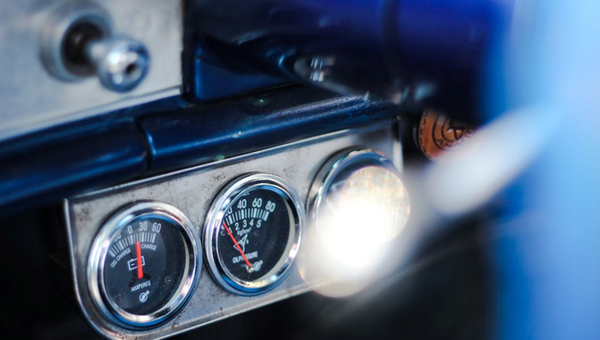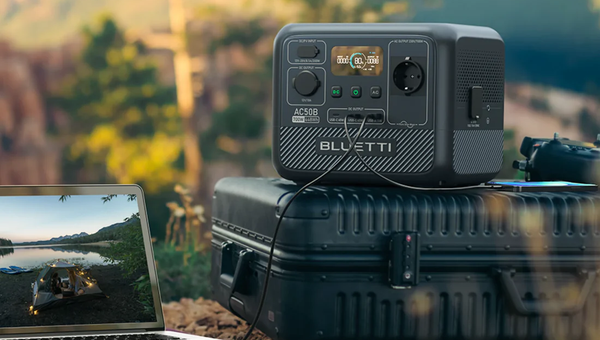Welcome to a journey that will demystify the energy consumption of your refrigerator while equipping you with practical knowledge to save power and reduce costs. In this blog post, we'll explore the captivating topic of how many watts a fridge uses, both per day and per hour, along with the average power consumption of these cooling appliances.
But that's not all¡ªwe'll introduce you to an innovative product called BLUETTI, which opens up the possibility of powering your refrigerator for free! So, keep reading to understand your refrigerator's energy consumption, explore methods to save power, and discover the wonders of BLUETTI.
Understanding the Energy Consumption of a Refrigerator
When it comes to understanding the energy consumption of a refrigerator, one of the key questions that often arises is, "How many watts does a refrigerator use?" The answer varies depending on several factors, including the size, model, and efficiency of the refrigerator.
Let's delve into this topic further to shed some light on the matter.
How Many Watts Does a Refrigerator Use?
Refrigerators come in various sizes and designs, resulting in different wattage ranges. On average, a typical refrigerator consumes around 100 to 600 watts. Smaller compact models may use as little as 50 watts, while larger, more energy-demanding refrigerators can consume up to 800 watts or more.
Calculating Daily and Hourly Power Consumption
- Determining Energy Usage per Day: To estimate the energy consumption of your refrigerator per day, you can use the formula: Daily Energy Consumption (kWh) = Average Power Consumption (kW) x 24 hours. For example, if your refrigerator has an average power consumption of 0.2 kW, the daily energy consumption would be 0.2 kW x 24 hours = 4.8 kWh.
- Estimating Energy Consumption per Hour: To calculate the hourly energy consumption of your refrigerator, divide the daily energy consumption by 24 hours. Using the previous example, 4.8 kWh ¡ 24 hours = 0.2 kWh or 200 Wh. This means that the refrigerator would consume approximately 200 watts per hour.
Unveiling the Average Power Consumption of a Refrigerator
The average power consumption of a refrigerator can be influenced by various factors. Understanding these factors can help you gauge the energy efficiency of your appliance and make informed decisions.
Factors Affecting Energy Consumption
- Size and Capacity of the Refrigerator: Generally, larger refrigerators tend to consume more power than smaller ones. Consider choosing a refrigerator size that suits your needs to avoid excessive energy usage.
- Energy Efficiency and Age of the Appliance: Newer models often incorporate advanced technologies that improve energy efficiency. On the other hand, older refrigerators tend to be less efficient and may consume more power.
- Ambient Temperature and Location: If the refrigerator is in a hot environment, it may need to work harder to maintain the desired temperature, resulting in increased power usage. Ensure proper ventilation around the refrigerator and avoid placing it near heat sources like ovens or direct sunlight.
- Frequency of Door Openings: Every time the refrigerator door is opened, cold air escapes, and warm air enters. The compressor then needs to work harder to restore the desired temperature, leading to increased energy consumption. Minimize unnecessary door openings and ensure that the door seals are in good condition to maintain efficiency.
?
Smart Tips to Save Energy for Your Refrigerator
Saving energy for your refrigerator not only helps reduce your electricity bills but also contributes to environmental sustainability. Let's explore some smart tips that can help you optimize energy usage and increase the efficiency of your refrigerator.
A. Optimal Temperature Settings: Set your refrigerator's temperature to the recommended level. The ideal temperature range for the refrigerator compartment is between 37 to 40 degrees Fahrenheit (3 to 4 degrees Celsius).
B. Organizing the Fridge for Efficiency: Arrange your refrigerator's contents strategically to promote efficient cooling. Keep items properly spaced to allow for proper air circulation and avoid blocking vents.
C. Regular Maintenance and Cleaning: Regularly clean the condenser coils at the back or underneath the refrigerator to remove dust and debris.
D. Energy-Efficient Appliances and Accessories: When purchasing a new refrigerator, look for models with the Energy Star label, indicating higher energy efficiency.
E. Managing Door Openings and Closing: Minimize unnecessary door openings and keep them as brief as possible.

F. Use Defrosting Techniques: Regularly defrost your freezer to prevent excessive ice buildup. Thick layers of ice act as insulation, reducing cooling efficiency and increasing energy consumption.
BLUETTI: Powering Your Refrigerator for Free
BLUETTI is a revolutionary product that opens up new possibilities for powering your refrigerator and other appliances. It is a portable power station that utilizes advanced lithium battery technology to provide clean and reliable energy. BLUETTI units come in various sizes and capacities, allowing you to choose the one that suits your power needs.
How Does BLUETTI Work with Your Refrigerator?
BLUETTI power stations work by storing energy from various sources, such as solar panels or the grid, in their internal batteries. This stored energy can then be used to power your refrigerator and other household appliances. Simply plug your refrigerator into the BLUETTI unit, and it will supply the required electricity, acting as a backup power source or even as the primary power supply.
Benefits of BLUETTI in Energy Conservation
BLUETTI offers several benefits when it comes to energy conservation. Firstly, it allows you to harness renewable energy sources like solar power, reducing your reliance on traditional electricity grids and decreasing your carbon footprint like the combination of the BLUETTI AC200MAX+PV350 Solar Generator Kit.

By using clean energy to power your refrigerator, you contribute to a more sustainable and eco-friendly lifestyle. Additionally, BLUETTI power stations provide efficient energy storage and management, optimizing the usage of electricity and reducing wastage.
However, BLUETTI is not limited to powering refrigerators alone. It can be used to provide electricity to a wide range of household appliances, including lights, fans, laptops, TVs, and more.
Conclusion
In this blog post, we explored the energy consumption of refrigerators and how many watts does a fridge use. By understanding the wattage and average power consumption of refrigerators, consumers can make informed decisions when purchasing appliances. Additionally, implementing energy-saving tips can help reduce electricity bills and contribute to a more sustainable lifestyle.
The importance of energy conservation cannot be overstated. By adopting energy-saving practices, utilizing innovative solutions like BLUETTI, and embracing sustainable habits, we can collectively reduce our carbon footprint and create a brighter and greener future for generations to come.
Let's take control of our energy consumption, save power, and make conscious choices that benefit both our wallets and the environment.



